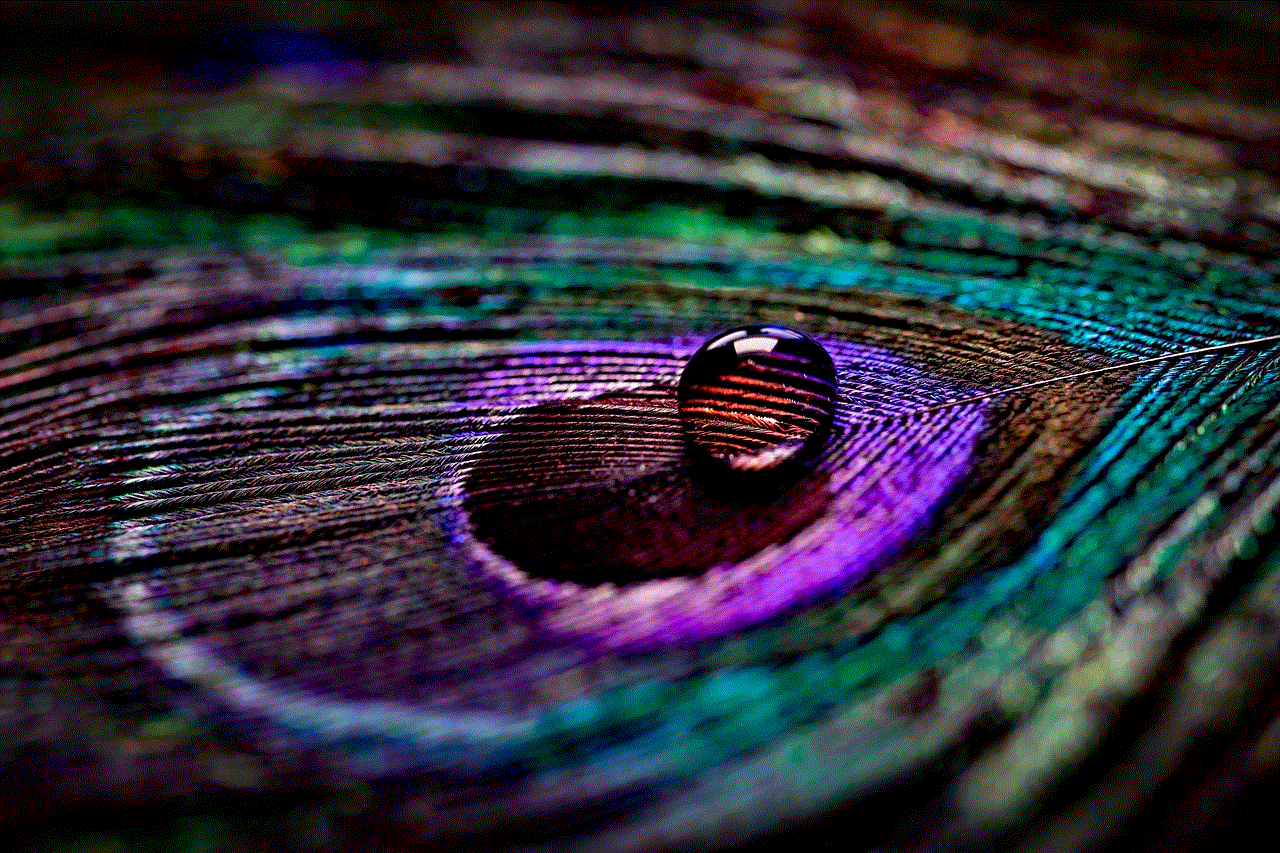sync facebook contacts android 2016
In today’s digital age, staying connected with friends and family has become easier than ever before. Social media platforms like facebook -parental-controls-guide”>Facebook have made it possible for people to maintain relationships with loved ones from all over the world. One of the key features of Facebook is the ability to sync contacts from your phone to your account. This not only helps you stay connected with people but also makes it easier to find and communicate with them. In this article, we will discuss how to sync Facebook contacts on Android devices in 2016.
Firstly, let’s understand what syncing contacts on Facebook means. Essentially, it means linking your phone’s contacts with your Facebook account. This allows you to access your Facebook friends’ contact information directly from your phone’s address book. It also means that any changes made to your Facebook friends’ contact details will automatically reflect in your phone’s contacts. This eliminates the need to manually update contact information for your Facebook friends on your phone.
Now, let’s look at the steps to sync Facebook contacts on an Android device in 2016. The process may vary slightly depending on the device and the version of the Facebook app, but the basic steps remain the same.
Step 1: Open the Facebook app on your Android device. If you do not have the app, you can download it from the Google Play Store.
Step 2: Log in to your Facebook account using your email/phone number and password.
Step 3: Once you are logged in, tap on the three horizontal lines on the top right corner of the app. This will open the menu.
Step 4: From the menu, select “Settings & Privacy” and then tap on “Settings”.
Step 5: In the Settings menu, scroll down and tap on “Account Ownership and Control”.
Step 6: Under the “Account Ownership and Control” section, tap on “Sync Contacts”.
Step 7: You will now see the option to “Sync Contacts” at the top of the screen. Tap on it to start the syncing process.
Step 8: A pop-up will appear asking for permission to access your contacts. Tap on “Allow” to grant permission.
Step 9: Once the syncing process is complete, you will see a message confirming it.
Step 10: To check if the contacts have been synced, go to your phone’s contacts app and look for the Facebook icon next to your contacts’ names. This indicates that their contact information has been synced from Facebook.
Now that you have successfully synced your contacts, let’s understand the benefits of doing so. Firstly, it makes it easier to find and communicate with your Facebook friends. You no longer have to search for their names in the Facebook app or remember their usernames. All their contact information is available in your phone’s address book.
Secondly, syncing contacts also ensures that you have the most updated contact information for your Facebook friends. With people changing phone numbers and email addresses frequently, it can be a hassle to keep track of these changes. But with sync contacts feature, any changes made to your friends’ contact details on Facebook will automatically reflect in your phone’s contacts.
Moreover, syncing contacts also makes it easier to stay connected with your friends on other platforms. For example, if you have synced a friend’s email address from Facebook, you can easily send them an email without having to manually enter their email address.
However, there are some concerns regarding syncing Facebook contacts on Android devices. One of the major concerns is the privacy of your contacts’ information. By syncing contacts, you are essentially giving Facebook access to your entire phone’s address book. This means that Facebook can now see the contact information of people who are not on the platform. If you are uncomfortable with this, you can choose not to sync contacts or manually select which contacts you want to sync.
Another concern is the security of your contacts’ information. As we have seen in the past, Facebook has faced several security breaches and data scandals. By syncing contacts, you are essentially trusting Facebook with your contacts’ information. It is important to regularly review your synced contacts and remove any that you do not want Facebook to have access to.
In conclusion, syncing Facebook contacts on Android devices in 2016 has made it easier for people to stay connected with their friends and family. It eliminates the need to manually update contact information and makes it easier to communicate with Facebook friends on other platforms. However, it is important to consider the privacy and security concerns before syncing contacts. As with any feature on social media platforms, it is crucial to regularly review and manage your settings to ensure the safety of your personal information.
pokemon platinum logo
Pokémon Platinum Logo: A Symbol of Timeless Adventure
Introduction:
The Pokémon franchise has captivated millions of fans worldwide since its inception in the late 1990s. With its unique blend of adorable creatures, strategic battles, and captivating storylines, Pokémon has become a global phenomenon. Each new installment in the main series brings with it a host of new Pokémon, regions to explore, and, of course, a brand new logo. In this article, we will delve into the intricacies of the Pokémon Platinum logo, exploring its design, symbolism, and impact on the overall experience of the game.
Paragraph 1: A Brief Overview of Pokémon Platinum
Released in 2008 for the Nintendo DS, Pokémon Platinum is an enhanced version of the previous generation’s games, Pokémon Diamond and Pokémon Pearl. Set in the fictional region of Sinnoh, players embark on a thrilling adventure to become a Pokémon Champion. With the addition of new features, such as the Distortion World and the Battle Frontier, Pokémon Platinum offers an enhanced gameplay experience. The game’s logo serves as the initial gateway into this immersive world, setting the tone for the player’s journey.
Paragraph 2: The Design of the Pokémon Platinum Logo
The Pokémon Platinum logo is predominantly silver and features the iconic Pokémon logo, with the word “Platinum” written in bold, capital letters beneath it. The font used for the word “Platinum” is sleek and futuristic, evoking a sense of modernity and adventure. The silver color of the logo symbolizes the game’s titular Pokémon, Giratina, who is associated with the Distortion World and has a distinctive silver color scheme.
Paragraph 3: Symbolism in the Pokémon Platinum Logo
Beyond its visual appeal, the Pokémon Platinum logo holds deeper meaning in relation to the game’s narrative. Giratina, the game’s legendary Pokémon and mascot, is known as the Renegade Pokémon. Its association with the Distortion World and its silver color scheme mirror the logo’s design choices. The silver color represents the duality of Giratina’s existence, caught between the real world and the Distortion World. This symbolism adds an extra layer of intrigue and mystery to the game, enticing players to delve deeper into its lore.



Paragraph 4: The Impact of the Pokémon Platinum Logo on Marketing
The Pokémon Platinum logo played a crucial role in the game’s marketing campaign, effectively communicating the game’s unique selling points to potential players. The sleek, futuristic font and silver color scheme appealed to both longtime Pokémon fans and newcomers, offering a fresh take on the franchise. The logo’s inclusion of the iconic Pokémon logo ensured brand recognition and further cemented Pokémon Platinum as a must-have game in the series.
Paragraph 5: The Evolution of Pokémon Logos
Throughout the years, Pokémon logos have undergone significant changes, reflecting the evolution of the franchise itself. From the original Pokémon Red and Blue logos, featuring pixelated text and simple designs, to more recent iterations like Pokémon Sword and Shield, which incorporate dynamic typography and intricate details, the logos have become increasingly sophisticated. The Pokémon Platinum logo stands as a testament to this evolution, showcasing a balance between simplicity and modernity.
Paragraph 6: The Role of Logos in the Pokémon Franchise
Logos play a vital role in the Pokémon franchise. They serve as the face of each game, instantly recognizable by fans around the world. The logos often feature the game’s legendary Pokémon, tying the design to the narrative and creating anticipation for players. Pokémon logos have become collectible items, with fans eagerly awaiting the reveal of each new logo in the lead-up to a game’s release.
Paragraph 7: Fan Reactions to the Pokémon Platinum Logo
When the Pokémon Platinum logo was first revealed, fans eagerly dissected its design and speculated on its symbolism. The sleek silver color and futuristic font were met with enthusiasm, with many praising the logo’s modern aesthetic. The inclusion of Giratina, a fan-favorite legendary Pokémon, further heightened excitement for the game. The logo sparked conversations among fans, building anticipation for the release of Pokémon Platinum.
Paragraph 8: The Pokémon Platinum Logo in Popular Culture
The Pokémon franchise has permeated popular culture, with its logos becoming iconic symbols of gaming. The Pokémon Platinum logo, with its silver color and distinct font, has been featured on merchandise, such as t-shirts, posters, and trading cards. The logo has also been incorporated into fan art, cosplay, and online avatars, further solidifying its place in popular culture.
Paragraph 9: Legacy and Longevity of the Pokémon Platinum Logo
Even after more than a decade since its release, the Pokémon Platinum logo continues to resonate with fans. Its sleek design and symbolism have become synonymous with the game and the Sinnoh region. The logo remains an enduring symbol of adventure and exploration, reminding players of the timeless appeal of the Pokémon franchise.
Paragraph 10: Conclusion
The Pokémon Platinum logo stands as a testament to the franchise’s ability to captivate players through visual design and symbolism. Its sleek silver color, futuristic font, and inclusion of Giratina create an enticing gateway into the world of Pokémon Platinum. As the franchise continues to evolve, the legacy of the Pokémon Platinum logo will endure, reminding players of the timeless adventure that awaits them in the Sinnoh region.
how to ping an iphone from an android
How to Ping an iPhone from an Android: A Comprehensive Guide



In today’s interconnected world, communication between different devices and platforms is essential. When it comes to communicating between an iPhone and an Android device, there might be instances where you need to ping an iPhone from an Android. Whether you want to check the availability of the iPhone or establish a connection for file sharing or other purposes, pinging an iPhone from an Android can be a useful skill to possess. In this comprehensive guide, we will walk you through the step-by-step process of pinging an iPhone from an Android device, along with some troubleshooting tips and additional information to enhance your understanding. So, let’s dive in!
1. Understanding the Basics of Pinging:
Before we delve into the specifics of pinging an iPhone from an Android, it’s important to grasp the fundamentals. Pinging is essentially a network diagnostic tool used to determine the reachability of a device on an IP network. It sends a small packet of data to the target device and waits for a response. If a response is received, it confirms that the target device is reachable. Pinging an iPhone from an Android involves similar principles, but with a few device-specific considerations.
2. Preparing Your Android Device:
To begin the process, you need to ensure that your Android device is ready for pinging an iPhone. Start by making sure your Android device is connected to a stable internet connection, either through Wi-Fi or mobile data. It’s also advisable to update your Android’s operating system to the latest version to ensure optimal compatibility with various iPhone models.
3. Determining the iPhone’s IP Address:
Next, you’ll need to determine the IP address of the iPhone you wish to ping. An IP address serves as a unique identifier for devices connected to a network. To find the iPhone’s IP address, navigate to the “Settings” app on the iPhone, tap on “Wi-Fi,” and locate the connected network’s information. Note down the IP address displayed next to “Router” or “Gateway.” This IP address will be used in the subsequent steps.
4. Installing a Ping App on Your Android:
To send a ping from your Android device to the iPhone, you’ll need to install a ping app. Several ping apps are available on the Google Play Store, offering various features and functionalities. Some popular options include PingTools Network Utilities, Fing, and Network Analyzer Pro. Choose the app that best suits your requirements and install it on your Android device.
5. Launching the Ping App:
Once the ping app is installed, launch it on your Android device. You’ll be greeted with a user-friendly interface, displaying multiple network diagnostic tools and options. To ping an iPhone, locate the “Ping” or “Ping Tool” section within the app. The exact location may vary depending on the app you chose, but most apps have a dedicated section for pinging.
6. Entering the iPhone’s IP Address:
In the ping tool section of the app, you’ll find a text box or field where you can enter the IP address of the iPhone you wish to ping. Input the IP address you noted down earlier from the iPhone’s settings. Double-check the IP address for accuracy, as even a minor mistake can lead to unsuccessful pinging.
7. Configuring Ping Parameters:
Before initiating the ping, you may have the option to modify certain parameters to customize the process. Common parameters include the number of ping requests to send, the time delay between each request, and the size of the data packet. Adjust these parameters as per your requirements or leave them at their default values.
8. Initiating the Ping:
Once you’ve entered the iPhone’s IP address and configured the parameters, it’s time to initiate the ping. Locate the “Ping” or “Start” button within the ping app and tap on it to begin the pinging process. The app will send a series of ping requests to the iPhone’s IP address.
9. Analyzing the Ping Results:
After the ping requests are sent, the app will display the results on your Android device’s screen. The results typically include details such as the response time, packet loss percentage, and the number of successful pings. Analyze these results to determine the iPhone’s reachability and the quality of the connection. A low response time and a low packet loss percentage indicate a stable and reliable connection.
10. Troubleshooting Common Issues:



If the ping results indicate unsuccessful pinging or high packet loss, it’s important to troubleshoot potential issues. Start by checking both devices’ internet connections to ensure they are stable and properly connected. Additionally, verify that the iPhone’s IP address was entered correctly in the ping app. If the problem persists, try restarting both devices and repeating the process. If all else fails, consult online forums, tech support, or professional assistance for further troubleshooting.
In conclusion, pinging an iPhone from an Android device is a handy skill to have, allowing you to establish connections, check device availability, and troubleshoot network issues. By following the step-by-step process outlined in this guide, you’ll be able to ping an iPhone from an Android device with ease. Remember to use reliable ping apps, ensure stable internet connections, and troubleshoot any potential issues. With practice and experience, you’ll become proficient in pinging and networking between different devices and platforms, enhancing your overall digital communication abilities.